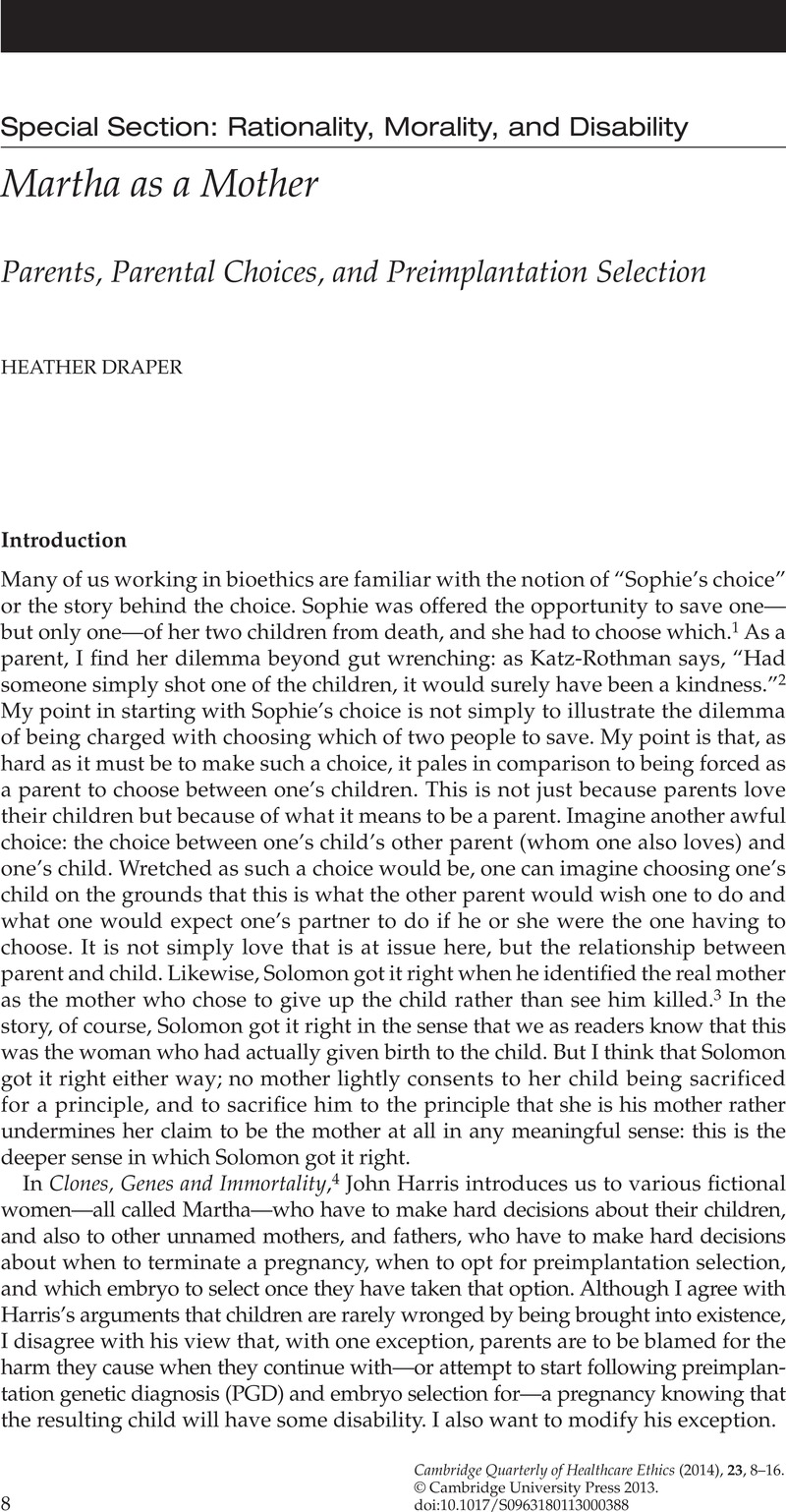No CrossRef data available.
Parents, Parental Choices, and Preimplantation Selection
Published online by Cambridge University Press: 20 November 2013

1. Styron, W. Sophie’s Choice. New York: Random House; 1976.Google Scholar
2. Rothman, BK. The Tentative Pregnancy. London: W. W. Norton; 1993, at 179.Google ScholarPubMed
3. 1 Kings 3: 16–27.
4. Harris, J. Clones, Genes and Immortality. Oxford: Oxford University Press; 1998.Google Scholar
5. See note 4, Harris 1998, at 109–10.
6. See note 4, Harris 1998, at 90.
7. See note 4, Harris 1998, at 91.
8. For instance, see note 4, Harris 1998, at 88.
9. See note 4, Harris 1998, at 111.
10. See note 4, Harris 1998, e.g., at 111, 116.
11. For instance, Harris, J. Rights and reproductive choice. In: Harris, J, Holm, S, eds. The Future of Human Reproduction. Oxford: Clarendon Press; 1998.CrossRefGoogle Scholar
12. See, for instance, note 4, Harris 1998, at 92–7; Erin CA, Harris J. Surrogacy. In: Walters WAW, ed. Human Reproduction: Current and Future Ethical Issues. Bailliere’s Clinical Obstetrics and Gynaecology. London: Bailliere Tindall; 1991.
13. Harris, J. The Value of Life. London: Routledge Kegan Paul; 1985, at 152.Google Scholar
14. See note 13, Harris 1985, at 71–2.
15. See note 13, Harris 1985, at 72.
16. See note 13, Harris 1985, at 140.
17. See note 4, Harris 1998, at 89.
18. See note 4, Harris 1998, at 90.
19. See note 4, Harris 1998, at 91.
20. See, for instance, Draper, H. Why there is no right to know one’s genetic origins. In: Athanssoulis, N, ed. Philosophical Reflections on Medical Ethics. Hamphsire and New York: Palgrave Macmilian; 2005, at 70–87.CrossRefGoogle Scholar
21. See note 4, Harris 1998, at 79–86.
22. See note 4, Harris 1998, at 22, 51–2; see note 13, Harris 1985, at 126. Note that I assume here that artificial parthenogenesis would be successful in the sense that the failure to implant could be overcome.
23. See note 4, Harris 1998, at 75–6.